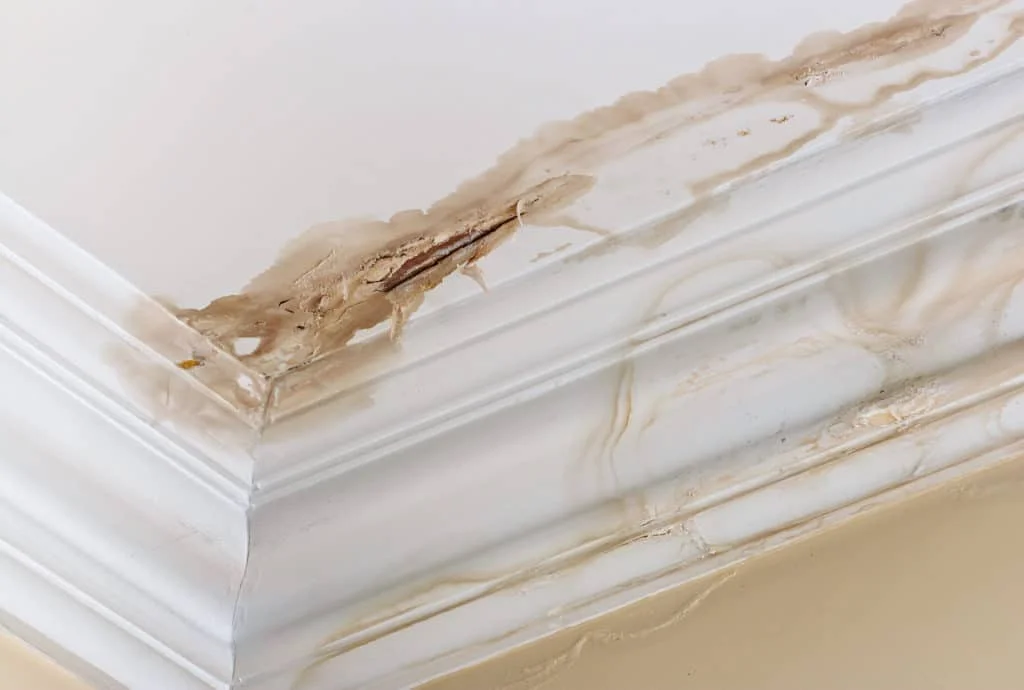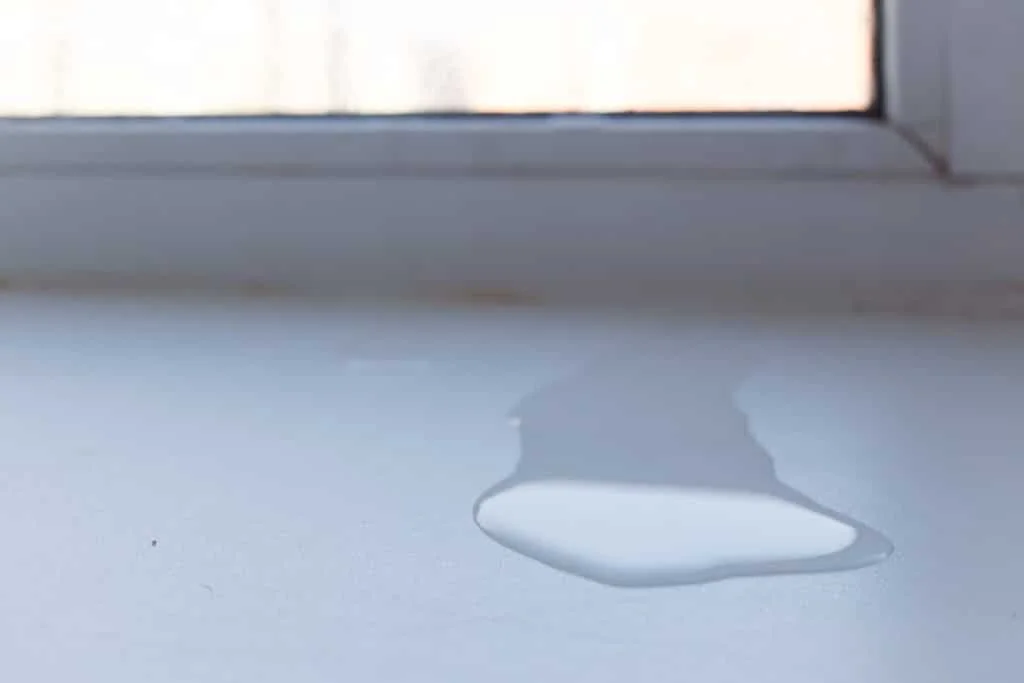Uh oh… your attic has water damage. What should you do now?
Unfortunately, water leaks in the attic can result in extensive — and expensive — property damage. From soggy insulation to mold growth, water damage in an attic often leads to structural integrity issues and can pose a health risk to anyone living in your house.
If you’ve discovered water damage in your attic, here are 4 things you need to know.
Common Causes of Roof Leaks
If you’re seeing sagging plaster, discoloration, or damaged drywall, you might assume that you’ve got a ceiling leak. It’s easy to see why, as the damage (and sometimes even dripping water) is most visible on a ceiling.
In reality, though, the leak often stems from the attic and roof. Unfortunately, there’s usually a lot more water and damage than is visible to the eye. Ignoring evidence of leaks can lead to structural damage.

If you think you may have a leak, start by checking on your air conditioner condenser. This is a component of your HVAC system that often “lives” in the attic.
When this piece of machinery gets backed up or the water reservoir is full, it may overflow or leak. The moisture can then seep down through the walls and ceiling.
Once you’ve ruled out your condenser, turn to the most common cause of water damage to the attic: roof leaks. Signs you may have a leak in your roof system include:
- Drips or puddles that get worse after it rains. Though it may take time for water to travel through the roof, if you see more moisture in the attic after a rainstorm, it’s likely a roof issue.
- Water is discolored or contains debris. When water makes its way in through the roof, it can bring dirt and debris with it.
- If you see more dripping when it’s freezing outside, ice may be building up along your eaves, forcing water to back up under shingles and down into your attic. In such cases, you may see more water or damage on walls and along the edges of the ceiling.
- You find damp (or soaked) insulation. Pull back any wet insulation and look for damage to drywall or plaster; the leak may not be directly above the insulated area, but may be seeping from elsewhere.

How to Track Down the Source of Ceiling Water Damage
Identifying the source of a leak can be difficult. Water may come in at one point, but may not directly drip beneath the source. Often, moisture spreads across the ceiling, absorbs into insulation, or drips down walls in other spots.
Track the leak to its source by following any drips upward, keeping in mind that water flows downhill. Look for telltale signs of water damage, such as damp, dirty insulation, or discoloration on the walls or ceiling.
Though a leak can happen anywhere, certain spots are more susceptible to encroaching water. Pay close attention to areas where roof plates meet, or where chimneys and vents protrude from the roof.
Other potential problem spots include holes drilled in the roof for cable, wires, or pipes. The areas around skylights may also be admitting water into the attic.
Check the sides of ventilation ducts for moisture. Corroded flashing may also allow water to seep through; so can broken shingles or roof valleys that aren’t sealed properly. Finally, clogged and overflowing rain gutters may back up and lead to roof leakage.
What Should I Do if There’s Water Damage in Attic?
You’ve discovered water damage in the attic… now what? Start by taking these four steps.
1. First, try to contain the leak. No matter what’s causing the water damage, it’s possible that there’s more extensive damage that isn’t necessarily visible to the eye. To keep damage from spreading, do your best to stop the leak.
2. Track the water back to its source. If the drip is active, place a bucket or plastic sheeting beneath to capture water.
3. You may need to drill a small hole in the center of a damaged area of the ceiling. This allows pooled water to drain. Make sure the area underneath is protected with plastic and containers to catch the water.

4. Now it’s time to repair the leak. While some roof damage can be fixed through DIY efforts, in most cases, you’ll need to call in a professional.
Unfortunately, roof repair is among the most expensive home repairs… but fixing the leak is crucial.
Left unrepaired, water damage can cause rot and structural problems, and lead to unhealthy mold and mildew. These issues are expensive to fix and can throw a wrench into your plans when it comes time to sell your home.
Is Your Attic Protected From Water Damage?
You can take steps to protect your attic from future water damage. Because most leaks come from above, the key lies in keeping your roof in good condition.
Routine roof maintenance can prevent water damage in the attic. The following steps will help you keep your roof sound and stop leaks before they start:
- Keep tree branches trimmed and away from your home’s roof and walls
- Clear debris from gutters and downspouts
- Check for signs of damage to shingles and flashing on a regular basis
- Schedule annual roof inspections
Keep your eyes open for any signs of water damage in the attic, too. Damp insulation, discoloration, bulging walls or ceilings, a musty smell, and mold or mildew growth may all indicate that you have a problem.
If you experience water damage, calling in a professional to repair the issue is key. While roof repair isn’t usually a cheap fix, it’s necessary in order to maintain your home’s structural integrity, healthy atmosphere, and comfort levels.
A sound roof is important when it comes time to sell, too. Unfortunately, selling a home with a leaky roof isn’t always easy. Mold must often be remediated before selling, as well. In some states, the law requires mold to be disclosed to home buyers.
Luckily, you have options. Selling to HomeGo means you don’t have to worry about dealing with the costs of fixing a leaky roof, selling a home with water damage in attic, or a mold problem. You’ll receive a firm offer, so you can sell your home quickly and easily — even with water damage — and move on with your life.




